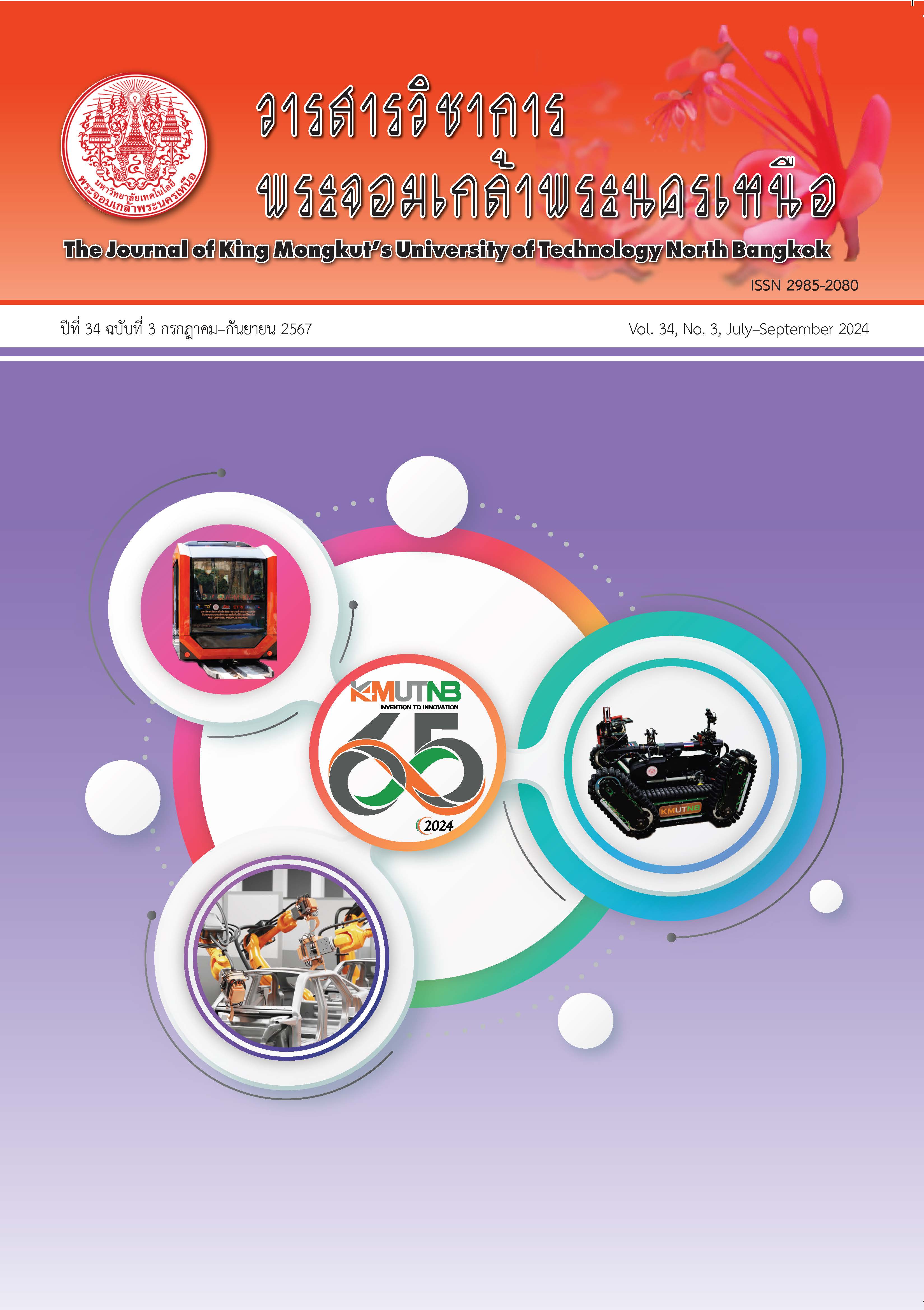New Physical Parametric data of a Binary System V 0829 Aquilae
Main Article Content
Abstract
The aim of the research was to analyze the physical characteristics of a binary star system, V 0829 Aquilae. The data were collected using a photometric technique at Observatory Chalerm Phrakiat 7th Cycle Birthday Anniversary Nakhon Ratchasima, National Astronomical Research Institute of Thailand (Public Organization). The data were analyzed using PHOEBE program. The results show that the binary system V 0829 Aquilae has a new ephemeris equation, HJD (min) = 2452500.442 + 0.221E with an orbital period of 0.221 days and an orbital period increase of 2.2730 × 10–20 seconds per year, the B-V color index of 0.716 and the effective temperature of 5,746.209 Kelvin. When analyzing the physical characteristics, it was found that the equipotential surfaces of the first and the second star are 2.352908 and 2.195246, respectively. The masses of the first and the second are 7.001554 and 1.750388, respectively. Based on the other physical parameters, it can be concluded that a period increase of V 0829 Aquilae found in the study may indicate a possible change on the physical state of this binary system from W Ursae Majoris to Beta Lyrae.
Article Details

This work is licensed under a Creative Commons Attribution-NonCommercial-NoDerivatives 4.0 International License.
The articles published are the opinion of the author only. The author is responsible for any legal consequences. That may arise from that article.
References
R. Diethelm, “V829 Aquilae is a pulsating Star with a variable light curve,” Commissions 27 and 42 of The IAU Information Bullentin on Variable Stars. IBVS, vol. 4530, no. 10, pp. 1–2, 1997.
G. Handler, H. Pikall, and R. Diethelm, “The nature of V829 Aql - A triple-mode radially pulsating post-main-sequence delta scuti star,” Information Bulletin on Variable Stars, vol. 4549, no. 1, pp. 1–4, Jan. 1998.
J. Patthanapong. Astronomy. 1st ed. Nakhonratchasima: NRRU, 2016 (in Thai).
C. C. Lovekin and J. A. Guzik, “Convection and Overshoot in models of gamma Doradus and delta Scuti stars,” The Astrophysical Journal, vol. 849, no. 38, pp. 1–7, 2017.
S. Boonruksar, Astrophysics, 1st ed. Chiang Mai: NARIT, 2017 (in Thai).
W. Supattra, “Evolution of eclipsing binaries system AK Cmi and V 714 Mon,” KKU Science Journal, vol. 47, no. 3, pp. 529–537, 2019 (in Thai).
T. Rangsungnoen, “Physical structure of W Uma binary system LO Andromeda,” KKU Science Journal,” vol. 41, no. 1, pp. 203–212, 2013. (in Thai).
M. Tangmatitham, A Guide to the Study of Operational Astronomy. 1st ed. Chiang Mai: NARIT, 2020, (In Thai).
A. Prsa, PHOEBE Scientific Reference: PHOEBE version 0.30, 1st ed. Philadelphia: Villanova University, 2011.
M. Wenger, F. Ochsenbein, D. Egret, P. Dubois, F. Bonnarel, S. Borde, and R. Monier, “The Simbad Astronomical Database, The CDS reference database for astronomical objects,” Astronomy and Astrophysics Supplement Series, vol. 143, pp. 9–22, 2000.
B. Nelson. (2020. Jun.). Bob Nelson's Data base of Eclipsing Binary O-C Files. (1st ed). [Online]. Available:https://www.aavso.org
J. Battat, Working with Magnitudes and Colour Indices, 1st ed. Massachusetts: Harward University press, 2005.
C. Jordi, I. Ribas, A. Gimenez, J. Torra, and E. Oblak, “Effective temperature determination of eclipsing binaries,” in Proceeding of the ESA Symposium ‘Hipparcos–Venice’ 97’, Italy, 1997, pp. 409–412.
H. J. Deeg, “Period, epoch, and prediction error of ephemerides from continuous set of timing measurements,” Astronomy and Astrophysics Journal, vol. 578, no. A17, pp. 1–5, 2015.
S. Weijia , C. Xiaodian, D. Licai, and D. G. Richard, “Physical parameter of late- type Contact binaries in the Northern Catalina Sky servey”, The Astrophysical Journal Supplement Series, vol. 247, no. 50, pp. 1–12, 2020.
E. M. Lohr, A. J. Norton, S. G. Payne, R. G. West, and P. J. Wheatley, “Orbital period changes and higher–order multiplicity fraction amongst SuperWASP eclipsing binaries,” Astronomy and Astrophysics Journal, vol. 578, no. A136, pp. 1–7, 2015.

